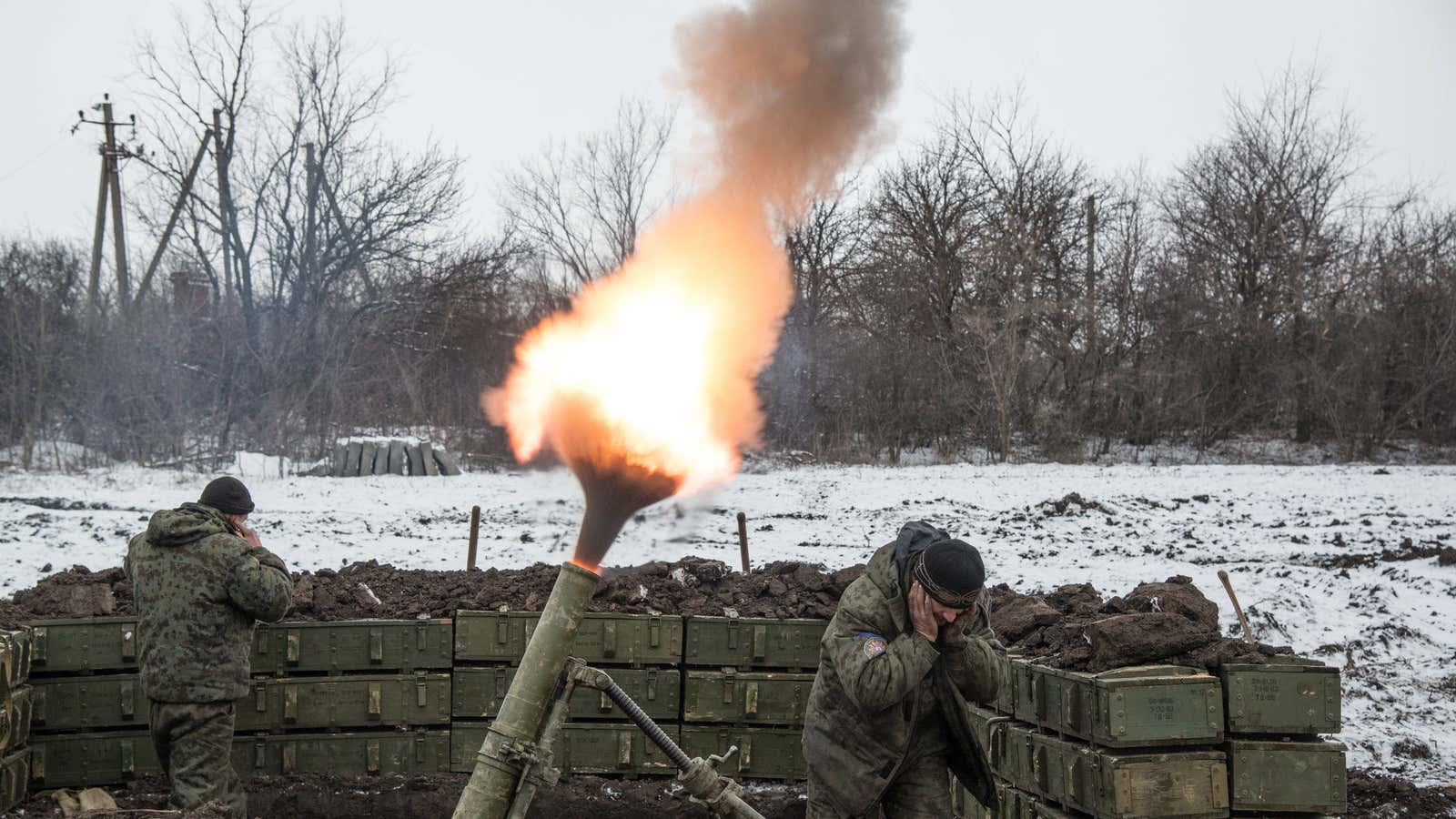Russian Army troops have begun taking delivery of advanced “silent” mortars, stealthy light artillery used by special commando units, Russia’s TASS news agency recently reported.
The 82mm 2B25 “Gull” mortar is manufactured by CRI Burevestnik, part of state-owned tank manufacturer UralVagonZavod. They are piston-launched, producing very little smoke or muzzle flash, and have a range of more than 1 km, or about six-tenths of a mile. Gull mortars are silent in the same way “bulletproof” vests are bulletproof: They aren’t, at least not 100% so. Picture a suppressed Kalashnikov rifle, only a lot bigger.
There are no other silent mortars on the market aside from the Gull, which Burevestnik says can fire 15 rounds per minute. Unnamed defense industry sources cited by TASS said a smaller 60mm version with a range of up to 4 km (2.5 miles) is in the works.
A Pentagon spokesperson declined to provide a statement, telling Quartz: “We don’t comment on matters of intelligence.”
The Gull “provides the advantage of concealed operation,” Burevestnik says in its marketing, explaining that it can be easily carried by one soldier. “All these advantages make the mortar attractive for Special Forces, especially in counter-terrorism operations.”
Sharon Burke, a former US assistant secretary of defense in the Obama administration, tells Quartz that the Gull could be useful for Russia given its “penchant for sneak attacks on neighbors with irregular forces, which the Russian government then denies responsibility for.”
“A long-range, large-caliber, stealthy and portable weapon would serve that end nicely,” says Burke, now a senior advisor to the New America Foundation.
The element of surprise
A regular mortar is not overwhelmingly loud to begin with; it produces a low thump that retired US Army colonel Jeffrey McCausland describes as something akin to a “cough.”
McCausland, a former Army War College dean who also commanded an artillery battalion during Operations Desert Shield and Desert Storm, sees the Gull as a “not-insignificant improvement” over existing mortars. He says the Gull’s most important feature is the element of surprise.
“If they don’t hear you coming, you can just sit there and keep dropping shells down the tube till the barrel melts,” McCausland tells Quartz. “You can pump out 15 rounds a minute from one of these things; you can do a good amount of damage.”
The Gull could also be a reliable moneymaker for Russia vis-a-vis overseas arms sales, McCausland believes. Countries like Sudan and DRC Congo “are all light infantry places, by and large, so selling it on the world market to folks like that is a distinct possibility,” he says.
Small systems like the Gull can be shipped easily, and should be simple for the Russians to get into the hands of various militaries and separatist groups without attracting much notice, explains former CIA military analyst Cindy Otis.
“Mortars are not what most people think of in terms of modern military technology,” she tells Quartz. “But they’re cost-effective, light, easily transportable, and adding a silencer is an extra plus.”
